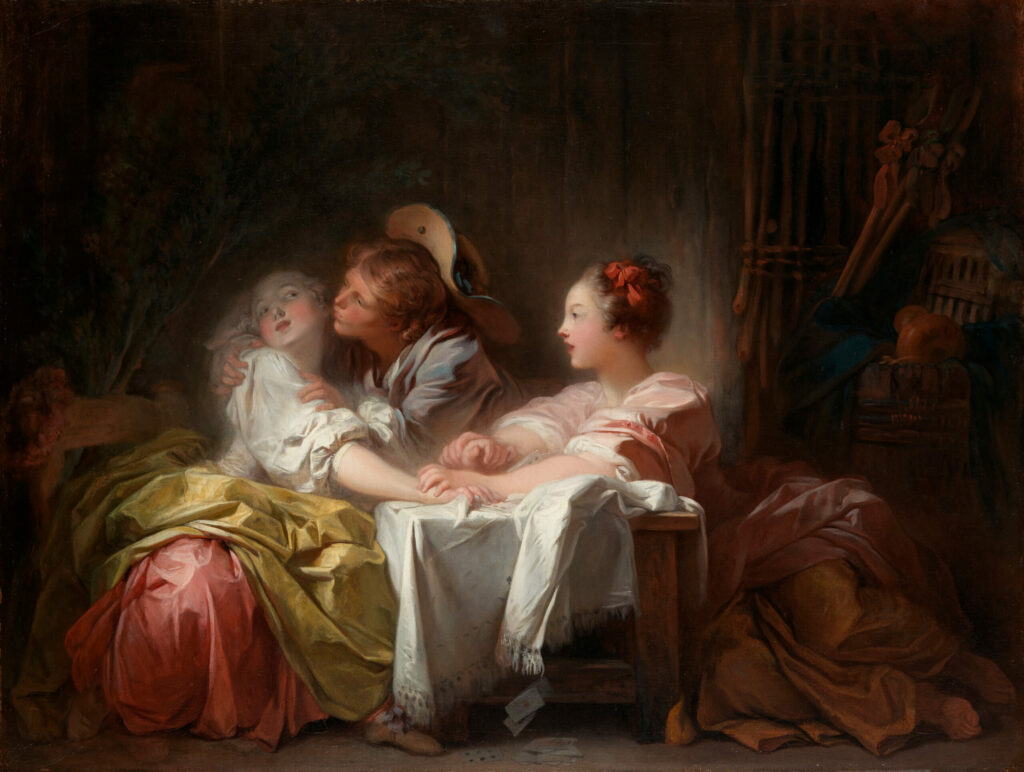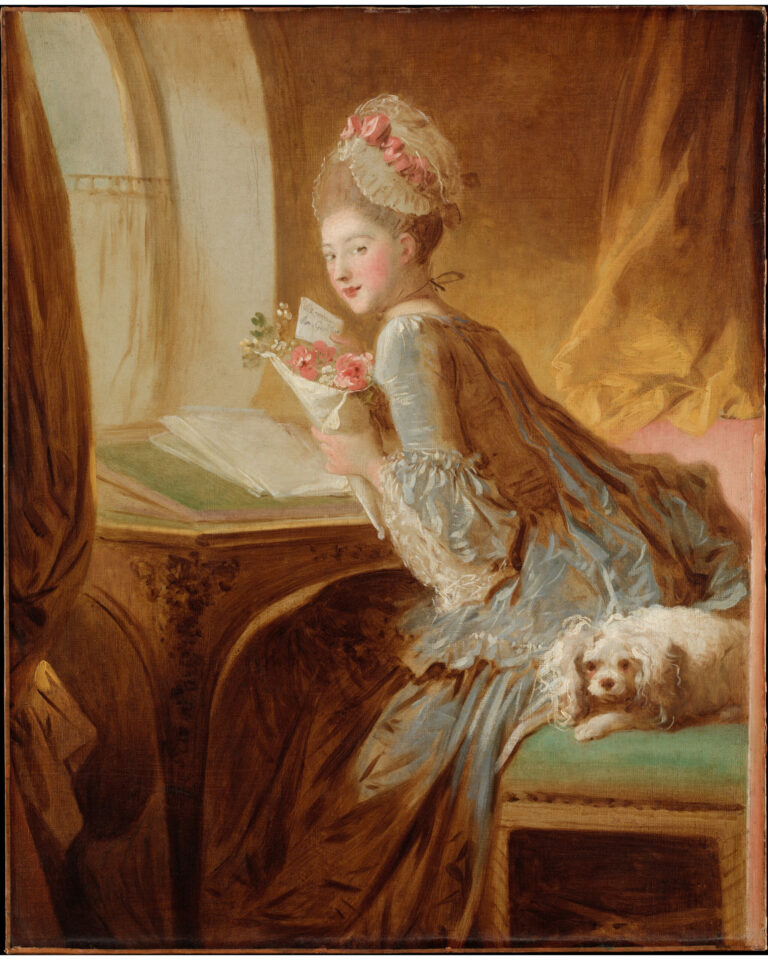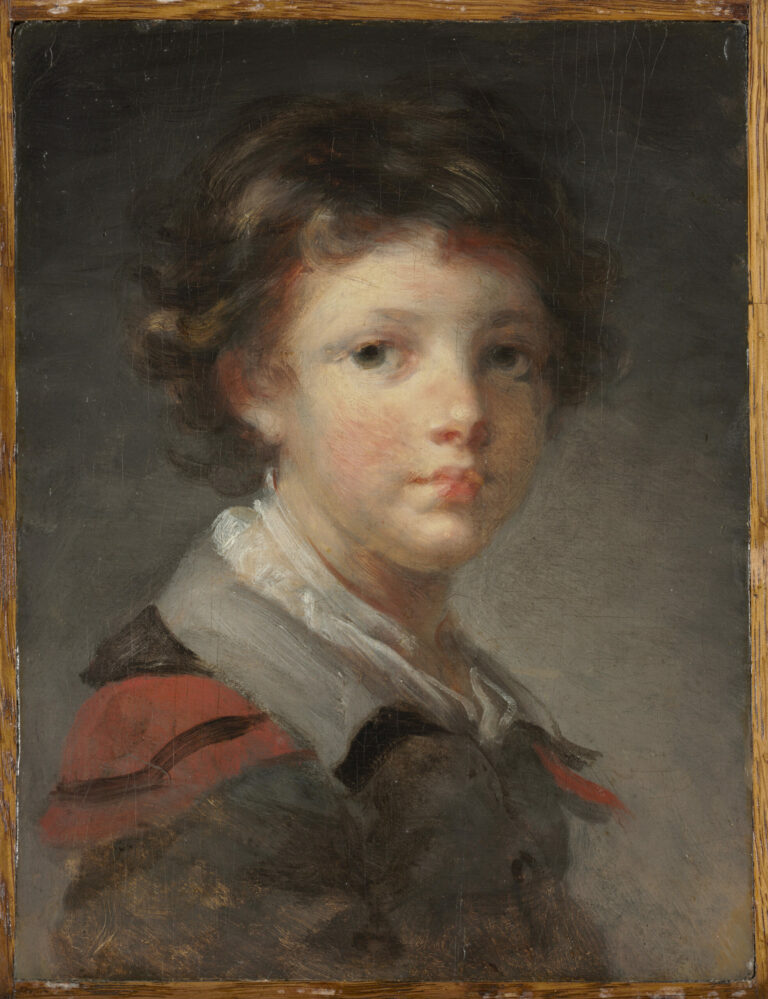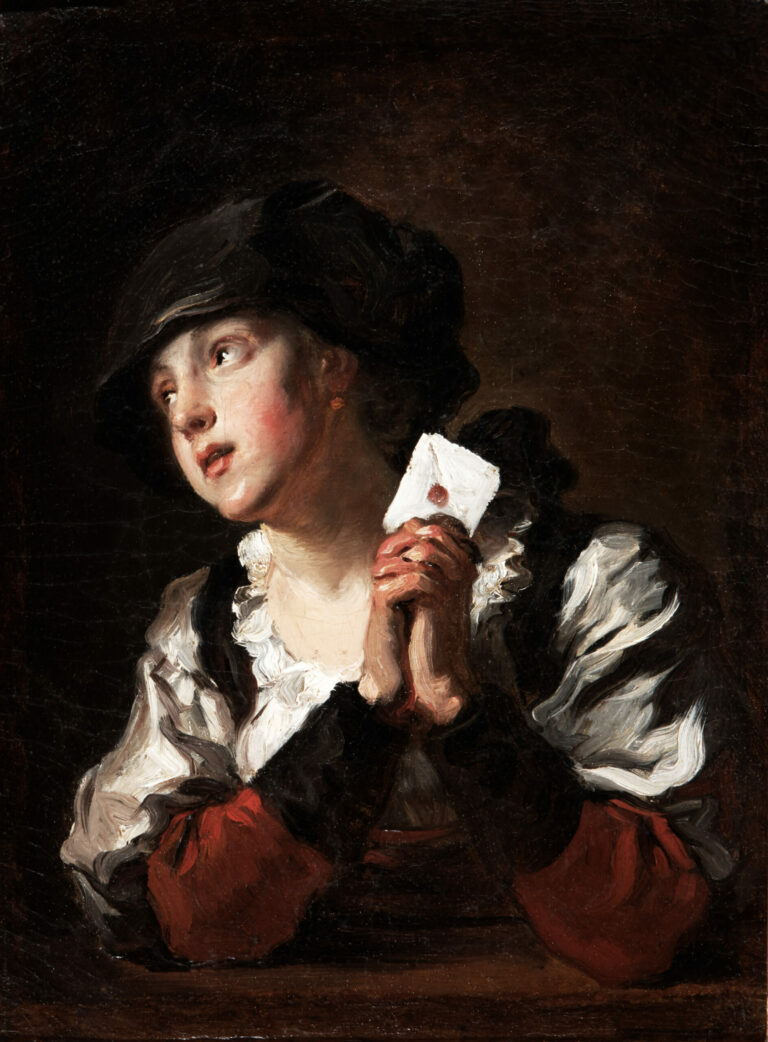
Jean Honoré Fragonard painted “The Stolen Kiss” around 1760 during his first Italian sojourn. This work reveals remarkably precise brushwork that contrasts with the energetic and free style of his later works. It illustrates the exceptional technical mastery of the French Rococo painter at his beginnings.
The gallant scene, probably inspired by his master François Boucher, depicts a young man attempting to steal a kiss from a young woman, under the knowing gaze of a maidservant. The intimate setting of a bourgeois interior, lit by lateral lighting, creates an atmosphere of refined clandestinity. The technique bears witness to the influence of his Italian studies. This private commission already announces the hedonistic sensibility that would characterize Fragonard’s art.
Further information
- The Stolen Kiss, by Jean Honoré Fragonard, ca. 1760
- 19 x 25 in. (48.3 x 63.5 cm)
- The Metropolitan Museum of Art, Fifth Avenue, New York, displayed in Gallery 631
- https://www.metmuseum.org/art/collection/search/436325
Jean Honoré Fragonard (1732-1806) embodies the libertine and refined spirit of the Age of Enlightenment. Born in Grasse, trained in François Boucher’s workshop after a brief period with Chardin, he stayed in Italy until 1761. This Italian period shaped his technique and nourished his inspiration, blending Venetian and Dutch influences. Upon his return to Paris, he developed a personal style combining technical virtuosity and pictorial hedonism. Admitted to the Royal Academy in 1765, he quickly favored private commissions over official subjects, responding to the tastes of a clientele fond of gallantries. His manner evolved toward increasingly free and expressive brushwork, anticipating Romantic audacities. The Revolution ended his worldly career, but David enabled him to survive by integrating him into the Louvre. Fragonard remains the quintessential painter of pre-revolutionary French art de vivre.



